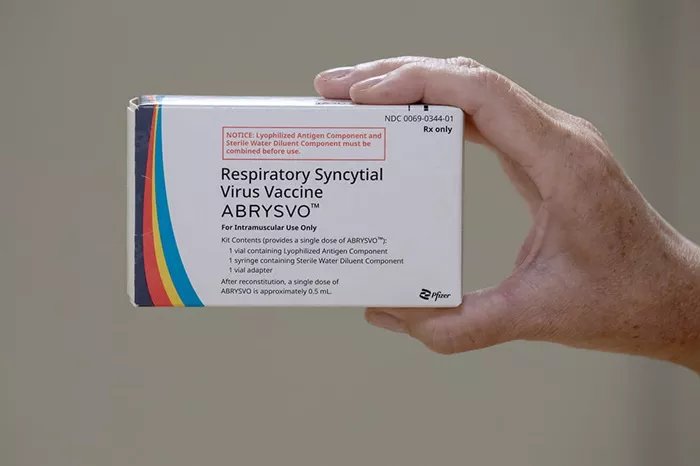Red eyes due to allergies can be a frustrating and uncomfortable experience for many individuals. Allergic reactions occur when the immune system overreacts to substances that are usually harmless, such as pollen, dust, pet dander, or certain foods. When these allergens come into contact with the eyes, they can trigger a range of symptoms, including redness, itching, swelling, and tearing. Fortunately, there are several strategies available to effectively treat red eyes caused by allergies and alleviate discomfort. In this comprehensive guide, we will explore various treatment options and practical tips for managing allergic conjunctivitis.
Understanding Allergic Conjunctivitis
Before delving into treatment options, it’s essential to understand the underlying condition: allergic conjunctivitis. The conjunctiva is the thin, transparent layer of tissue that covers the white part of the eye and lines the inner surface of the eyelids. When allergens irritate the conjunctiva, it triggers an immune response, leading to inflammation and the characteristic symptoms of red, itchy, and watery eyes.
There are several types of allergic conjunctivitis, including:
Seasonal Allergic Conjunctivitis (SAC): This type of allergic conjunctivitis occurs seasonally and is typically triggered by airborne allergens such as pollen from trees, grasses, and weeds.
Perennial Allergic Conjunctivitis (PAC): Unlike SAC, PAC can occur year-round and is usually triggered by indoor allergens such as dust mites, pet dander, mold, or cockroach droppings.
Vernal Keratoconjunctivitis (VKC): VKC is a more severe form of allergic conjunctivitis that primarily affects young people, often boys, with a history of other allergic conditions like asthma or eczema. It tends to occur seasonally and is characterized by intense itching, stringy discharge, and sensitivity to light.
Giant Papillary Conjunctivitis (GPC): GPC commonly affects individuals who wear contact lenses. It is characterized by the formation of large, raised bumps (papillae) on the inner surface of the eyelids, leading to redness, itching, and discomfort.
Treatment approaches may vary depending on the type and severity of allergic conjunctivitis. Here, we’ll discuss various methods to effectively manage red eyes caused by allergies.
1. Avoidance of Allergens
One of the most effective strategies for managing allergic conjunctivitis is to minimize exposure to allergens. While it may be challenging to completely avoid allergens, especially outdoor triggers like pollen, there are steps you can take to reduce your exposure:
Monitor Pollen Counts: Check local pollen forecasts and try to stay indoors when pollen levels are high, particularly during peak allergy seasons.
Use Air Purifiers: Invest in HEPA (high-efficiency particulate air) filters for your home to help remove airborne allergens such as dust mites, pet dander, and mold spores.
Keep Windows Closed: Close windows and use air conditioning during pollen seasons to prevent outdoor allergens from entering your home.
Limit Outdoor Activities: If you must spend time outdoors during allergy season, wear wraparound sunglasses to protect your eyes and avoid rubbing them, as this can exacerbate symptoms.
Control Indoor Allergens: Take measures to reduce indoor allergens by regularly vacuuming carpets, washing bedding in hot water, and keeping pets out of bedrooms.
While avoidance measures can help reduce allergen exposure, they may not always be sufficient on their own, especially for individuals with severe allergies or those exposed to unavoidable triggers. In such cases, additional treatment options may be necessary to manage red eyes and other allergic symptoms effectively.
2. Over-the-Counter (OTC) Eye Drops
Over-the-counter eye drops, also known as artificial tears or lubricating eye drops, can provide temporary relief from redness and itching associated with allergic conjunctivitis. These drops work by moisturizing the eyes and flushing out allergens, dust, and other irritants. When selecting OTC eye drops for allergies, look for products specifically formulated to relieve itching and redness, and avoid those containing preservatives, which can irritate sensitive eyes.
Some common types of OTC eye drops for allergic conjunctivitis include:
Antihistamine Eye Drops: These eye drops contain antihistamines, such as ketotifen or pheniramine, which help reduce itching and inflammation caused by histamine release during allergic reactions.
Mast Cell Stabilizer Eye Drops: Mast cell stabilizers, such as sodium cromoglicate or nedocromil, work by preventing the release of histamine and other inflammatory substances from mast cells, thereby reducing allergic symptoms.
Artificial Tears: Lubricating eye drops can help relieve dryness and irritation associated with allergic conjunctivitis, providing soothing relief without active ingredients that target allergy symptoms.
It’s essential to follow the instructions provided with OTC eye drops and consult with a healthcare professional if you experience persistent or severe symptoms despite using these products.
3. Prescription Medications
For individuals with moderate to severe allergic conjunctivitis or those who do not find sufficient relief with OTC treatments, prescription medications may be necessary. These medications are available in various forms, including eye drops, oral tablets, and nasal sprays, and work by targeting different aspects of the allergic response.
a. Antihistamine/Mast Cell Stabilizer Eye Drops: Prescription-strength eye drops combining antihistamines and mast cell stabilizers, such as olopatadine or azelastine, are often prescribed to provide dual action against allergic symptoms. These medications offer both immediate relief from itching and redness and long-term control of inflammation.
b. Corticosteroid Eye Drops: In cases of severe allergic conjunctivitis or acute flare-ups, corticosteroid eye drops may be prescribed to rapidly reduce inflammation and alleviate symptoms. However, long-term use of corticosteroids carries the risk of side effects such as increased intraocular pressure and cataract formation, so they are typically used for short periods under close medical supervision.
c. Oral Antihistamines: Oral antihistamines, such as cetirizine, loratadine, or fexofenadine, can help relieve systemic allergy symptoms, including red eyes, itching, sneezing, and nasal congestion. While these medications are effective for treating general allergic reactions, they may not provide sufficient relief for eye-specific symptoms in some individuals.
d. Immunomodulators: In cases of severe or chronic allergic conjunctivitis that do not respond to other treatments, immunomodulatory medications such as cyclosporine or tacrolimus may be prescribed. These drugs work by suppressing the immune response and reducing inflammation in the eyes, helping to control symptoms over the long term.
It’s important to use prescription medications exactly as directed by a healthcare professional and attend follow-up appointments to monitor for any potential side effects or complications.
4. Cold Compresses
Cold compresses can provide immediate relief from red, swollen eyes caused by allergic reactions. The cold temperature helps constrict blood vessels, reducing inflammation and relieving discomfort. To use cold compresses effectively:
Wrap a few ice cubes or a gel pack in a clean cloth or towel.
Apply the cold compress gently to closed eyelids for 5-10 minutes at a time.
Repeat as needed throughout the day to soothe irritated eyes and reduce redness.
It’s essential to avoid applying ice directly to the skin, as this can cause frostbite or damage delicate tissues around the eyes. Always use a barrier, such as a cloth or towel, to protect the skin while using cold compresses.
5. Allergy Immunotherapy
Allergy immunotherapy, also known as allergy shots or sublingual immunotherapy (SLIT), is a long-term treatment option for individuals with severe allergies that do not respond well to other treatments. Immunotherapy works by gradually desensitizing the immune system to specific allergens, reducing the frequency and severity of allergic reactions over time.
Allergy shots involve receiving regular injections of allergen extracts, typically administered by a healthcare professional in a clinic or office setting. The dosage is gradually increased over several months to build tolerance to the allergens. Once the maintenance dose is reached, injections are usually given less frequently to maintain effectiveness.
Sublingual immunotherapy involves placing allergen extracts under the tongue and holding them there for a specified period, usually one to two minutes, before swallowing. This method can be more convenient for some individuals, as it can be done at home without the need for injections.
While allergy immunotherapy can be highly effective in reducing allergic symptoms, it requires a significant time commitment and regular monitoring by a healthcare provider. It may not be suitable for everyone and is typically reserved for individuals with severe allergies that significantly impact their quality of life.
6. Environmental Modifications
In addition to avoiding allergens and using medications to manage symptoms, making modifications to your environment can help reduce exposure to triggers and alleviate allergic conjunctivitis symptoms. Consider the following environmental modifications:
Allergen-Proof Bedding: Encase mattresses, pillows, and box springs in allergen-proof covers to prevent dust mites from accumulating in bedding.
HEPA Air Purifiers: Use high-efficiency particulate air (HEPA) filters in bedrooms and other living spaces to remove airborne allergens such as pollen, dust, and pet dander.
Regular Cleaning: Vacuum carpets, rugs, and upholstered furniture regularly using a vacuum cleaner equipped with a HEPA filter. Wash bedding, curtains, and other fabrics in hot water to remove allergens.
Pet Care: Bathe pets regularly and keep them out of bedrooms to minimize exposure to pet dander. Use a high-efficiency vacuum cleaner designed for pet hair removal to clean carpets and upholstery.
Humidity Control: Use a dehumidifier to maintain indoor humidity levels below 50%, as dust mites and mold thrive in humid environments. Avoid using humidifiers, especially in bedrooms, as they can promote mold growth if not properly maintained.
Pollen Protection: Keep windows closed during peak pollen seasons and use air conditioning to filter outdoor air. Shower and change clothes after spending time outdoors to remove pollen from skin and clothing.
By implementing these environmental modifications, you can create a more allergy-friendly living environment and reduce the frequency and severity of allergic conjunctivitis symptoms.
7. Eye Hygiene Practices
Practicing good eye hygiene can help prevent and alleviate red eyes caused by allergies. Follow these tips to maintain healthy eyes:
Avoid Rubbing Eyes: Rubbing your eyes can exacerbate allergic symptoms and increase inflammation. Instead of rubbing, use cold compresses or artificial tears to soothe irritation.
Wash Hands Frequently: Wash your hands frequently, especially before touching your eyes, to remove allergens and prevent the spread of germs.
Replace Eye Makeup Regularly: Replace eye makeup, such as mascara and eyeliner, regularly to prevent bacterial contamination and reduce the risk of allergic reactions.
Remove Contact Lenses: If you wear contact lenses, remove them before applying eye drops and avoid wearing them during allergy flare-ups, as they can trap allergens and exacerbate symptoms.
By incorporating these eye hygiene practices into your daily routine, you can help minimize the risk of allergic conjunctivitis and maintain optimal eye health.
Conclusion
Red eyes caused by allergies can be uncomfortable and disruptive, but with proper treatment and management strategies, you can find relief and improve your quality of life. By avoiding allergens, using over-the-counter and prescription medications, making environmental modifications, practicing good eye hygiene, and seeking guidance from an eye care professional when needed, you can effectively manage allergic conjunctivitis and enjoy clear, comfortable vision. Remember to consult with a healthcare provider before starting any new treatment regimen, especially if you have underlying medical conditions or are taking medications that may interact with allergy treatments. With the right approach, you can minimize red eyes and other allergy symptoms and enjoy a life free from discomfort and irritation.
[inline_related_posts title=”You Might Be Interested In” title_align=”left” style=”list” number=”6″ align=”none” ids=”6100,6097,6094″ by=”categories” orderby=”rand” order=”DESC” hide_thumb=”no” thumb_right=”no” views=”no” date=”yes” grid_columns=”2″ post_type=”” tax=””]

































